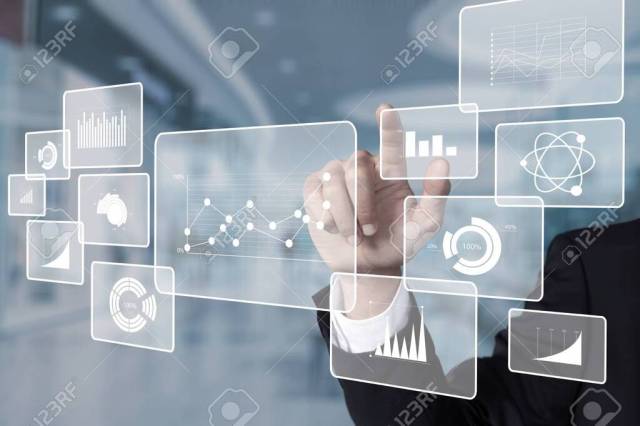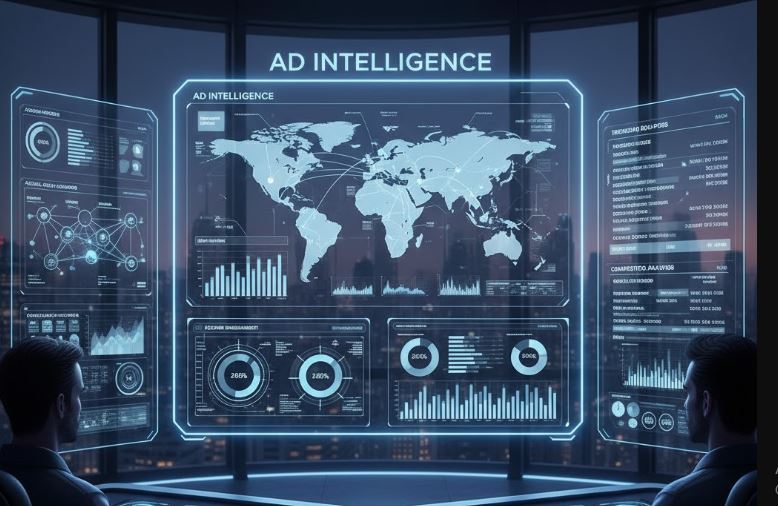Data visualization is a transforming way to create insightful stories where a picture is worth a thousand words. In today’s rapidly evolving digital landscape, the old saying has not been relevant, and varied data types have created challenges for businesses in getting accurate information. They become confused while understanding what matters and what doesn’t. Visual data patterns such as tables, charts, graphs, and dashboards decide what is more relevant to users’ needs. Data visualization helps individuals and organizations to create a clear, accessible, and understandable picture of their expertise.

What is a data visualization service?
Readers can get comprehensive details and identify the latest trends by glancing at visualization patterns because people respond better to visuals than text. A human brain can process visual information at 60,000 times more than text; these strong references provoke organizations to market their services through the data visualization process.
Key Components
Data visualization components enhance the visually of patterns. Understanding these components helps developers create informative, attractive content and guides for making informed decisions.
Data Collection
Data visualization starts by collecting data from various sources, such as spreadsheets, APIs, and databases. This step significantly impacts visualization quality because accurate and efficient data attracts more audiences. The collected data should be approved after validation checks and a cleaning process, which helps remove errors and inconsistencies.
Data Processing
The process involves cleaning, selecting, and reshaping data in the right form to make it perfect for visualization. The teams use different AI tools and strategies to clean data and transform raw material into an understandable format. In this process, irrelevant information is removed to get compatible data according to visualization platforms.
Visualization Tools
The next and most meticulous step is choosing the right visualization tool from many options because the perfect decision helps convey the message accurately. The standard options include Microsoft Power BI, Qlik Sense, Tableau, and Looker. Each tool has versatile specifications and offers a range of customization to prepare visualization according to individual preferences. Popular visualization types generated through these tools are bar charts, pie charts, line graphs, dashboards, maps, and heat maps.
Customization
Customization in pre-defined visual designs by tools plays a significant role in making the creation relevant and effective for individual business needs. The specific organizational requirements can be achieved through tailored recommendations in color contrast, data pattern, and customized visual types. These settled designs enhance interaction and make data more engaging with user preferences.
User Interaction
Maintaining user interaction is a critical component that enables users to explore data from multiple elements. Filtering, drill-down, and other interactive features allow users to perform deep analyses and provide comprehensive information. Using real-time data in visualization is mandatory to provide the latest information and help users make informed decisions.
Benefits
Data visualization has many benefits and plays a significant role in the digital world, where extensive data can overwhelm the business. Data visualizations help in diverse contexts, and organizations must have knowledge about all of them.
Enhanced Decision-Making
The most notable advantage of data visualization is its ability to enhance decision-making. It transforms abundant and complex data into visual formats most digestible for people. Visualization formats reveal trendy data patterns that are hardly noticeable in raw materials. Stakeholders can quickly grasp these insight patterns, which empower them to respond to challenges and make effective decisions.
Improved Communication
Data visualization is a powerful tool for conveying a short but compelling message to non-technical audiences who cannot understand complex concepts in raw content. As human minds click visual elements fast, their impression is long-lasting, which enhances retention by making easy recall. Supportive, interactive exploration in visual content allows users to explore insights on their terms.
Identifying Trends and Patterns
Clear representation in visual graphs, charts, and heat maps provides easy access to trendy patterns. Through line graphs and time series charts, organizations can smoothly assess the developing and cracking down market practices. Businesses can easily detect anomalies in their content, which leads to adopting proactive strategies before the potential impact of issues on growth rate.
Efficiency
Improved communication and simplified understanding saves time on complex concepts that can take time for beginners. Clearly and easily digestible formats provide insights to make timely decisions, which provides enough duration for stakeholders to focus on their businesses. The efficiency of analyzing things deeply enables them to grow a business under initiative practices.
Use Cases
Data visualization is used in countless fields; the art of representing complex and extensive information simply and attractively makes it applicable in business fields. Some of the primary uses of this technology are explained below:
Business Performance Monitoring
Data visualization is widely used in business, allowing organizations to monitor their KPIs and metrics. Multidimensional data analysis will enable stakeholders to observe and compare market trends. The dashboard tool provides a digestible format for observing customer satisfaction rates, operational performance, and sales growth, leading to a quick assessment of business growth against defined goals. A detailed analysis provides a comprehensive roadmap to identify improvements and proactive practices to stay competitive.
Market Analysis
Market trends change frequently, and adherence to all the latest requirements is key to business success. Organizations face challenges in analysis because, in abundant and unstructured data, it is hard to decide what is casual and what is compulsory to learn. Data visualization helps organizations understand the latest market trends and customer demands. Companies can achieve insights by looking at large datasets quickly, which allows them to understand customer preferences and change their strategies according to available demographics.
Financial Reporting
A current financial state and available funds for business expansion help investors make informed decisions. Data visualization assists in comprehensive dashboard creation, which gives transparent information about annual revenue, expected expenses, and profitable resources. All these detailed data allow financial to enhance finance health and allocation of resources for future development. Precise financial data helps to comply with regulatory guidelines, whereas frequent auditing process helps in successful external audits.
Healthcare
The healthcare sector is a complex field with having lot of technicalities; comprehensive knowledge about each minor issue is essential for healthcare providers to ensure quality health and satisfied patient service. Data visualization plays a transformative role in the healthcare sector in maintaining patients’ information and treatment outcomes and enhancing operational proficiency. Real-time tracking of disease signs or lab results allows quick response to attend emergencies. Healthcare organizations can proactively strengthen their operation skills by visualizing comprehensive data about the current operational state.
Supply Chain Management
Monitoring logistics activities, inventory arrangements, and production processes is mandatory to maintain an adequate supply chain. All these tasks become straightforward through data visualization, helping to illustrate distribution from production units to target consumers. Visual tools help to identify the discrepancies in the supply chain and guide the monitoring of inventory levels. It allows organizations to adopt beneficial strategies for supply chain optimization and service improvement.
Challenges
Data visualization has become necessary for every organization and individual due to its unparalleled benefits and guidance to maximize business profit. However, despite having countless rewards, technology also has risks. Some most common mistakes or challenges that are faced in data visualization are as follows:
Data Privacy and Security
Data privacy is critical in transforming raw material into a visual format with the latest tools; risks of discrepancies or cyber-attacks are higher in non-professional handling. As organizations finalize their decisions according to available data, maintaining sensitive information secure and adhering to regulatory measures, such as HIPAA or GDPR, is necessary. To prevent this challenge, organizations should develop robust security strategies by implementing encryption techniques and regular audits to resolve security issues promptly.
Data Integration
In today’s digital and fast-evolving landscapes, data is collected from multiple resources, and a lack of compatibility with visual tools can become a challenge in creating effective visualization. To prevent this problem, an individual must collect compatible data from consistent resources, and quality assurance tests are valuable to ensure data quality. Organizations should also select the tools and visual strategies after integration confirmation. This analysis process can prove time-consuming but enhances the overall visualization impacts.
User Training
Although the visualization tools provide the best outcomes in data visualization integrating human potential with AI technology gives real-time and improved results. Maintaining practical user training is essential in data visualization because a beginner or untrained person does not have enough potential to handle the latest technology-based tools. Organizations need to invest in user training to get full compliance and data integration in data visualization.
Final Analysis
Data visualization is a field with full potential that can be improved by advanced technologies. AI and machine learning are the best examples of this. These technologies are evolving rapidly and benefit data visualization by enhancing its results and capabilities. The patterns are easy to identify for tools and provide insight results, providing personalized and responsive visualized data to meet the unique demands of organizations.
Businesses must select the right tools and professional services to transform their data from text to visual formats. They must assess their essential needs and drive customized results to eliminate the bottlenecks in their business.






One thought on “What is a data visualization service”
Comments are closed.